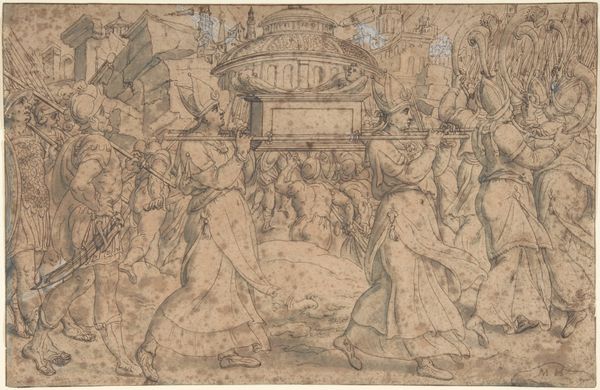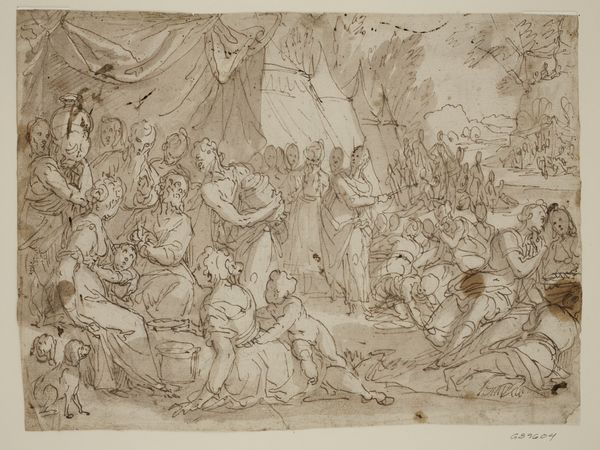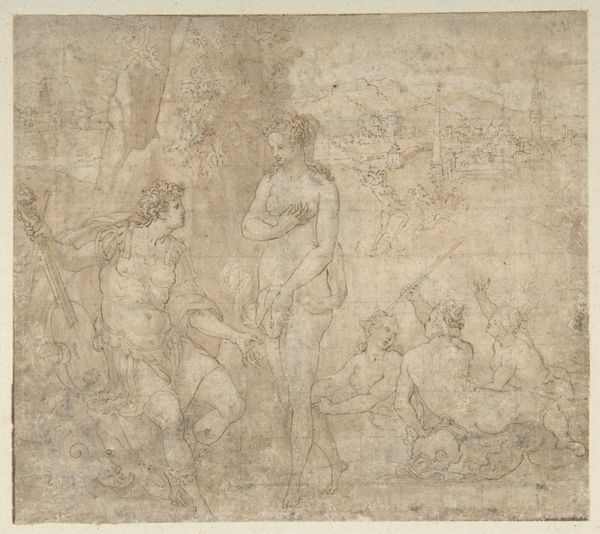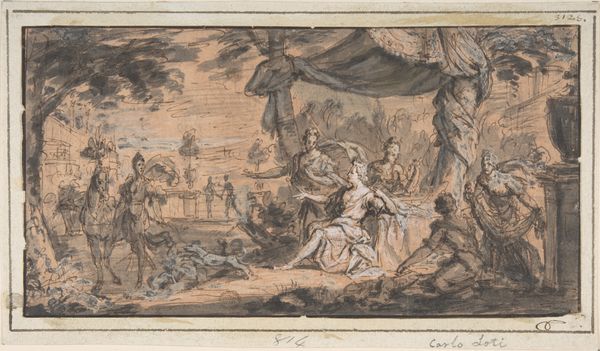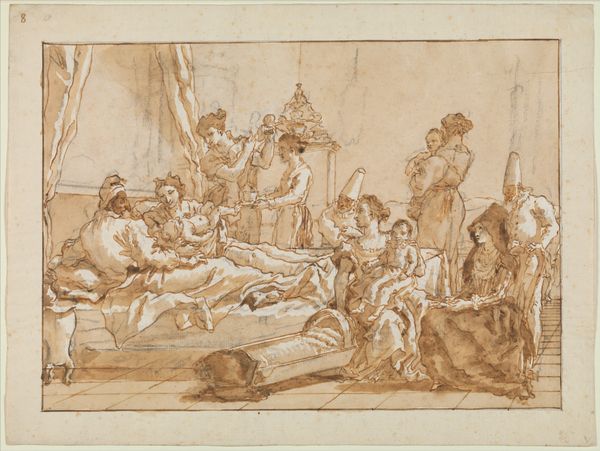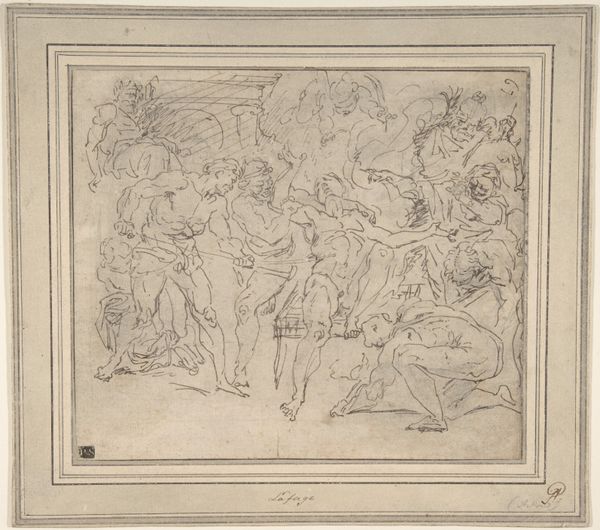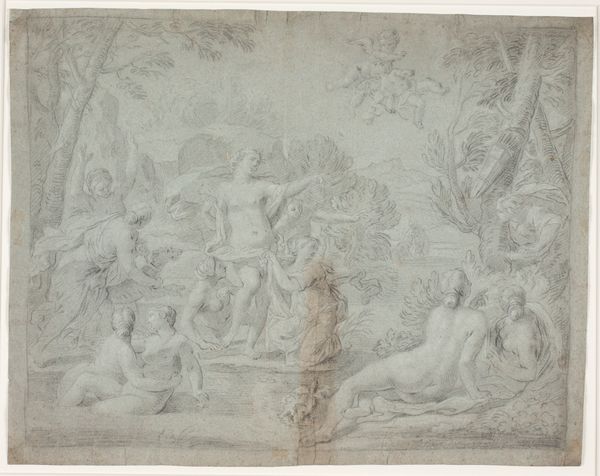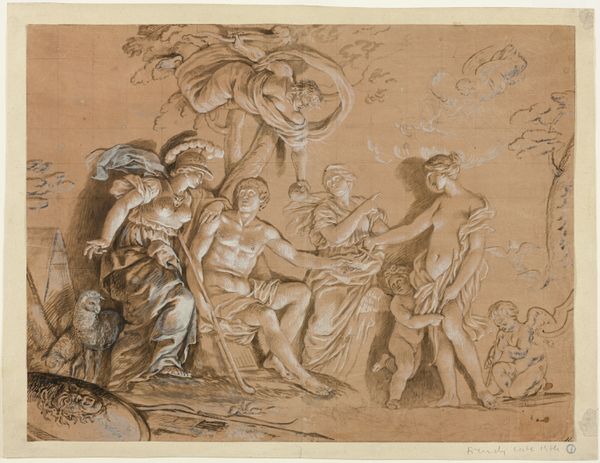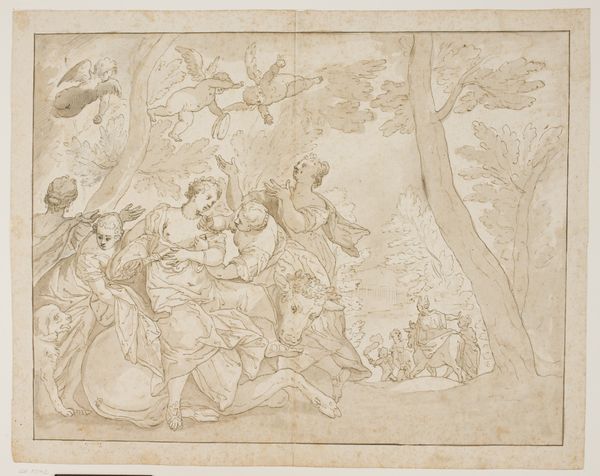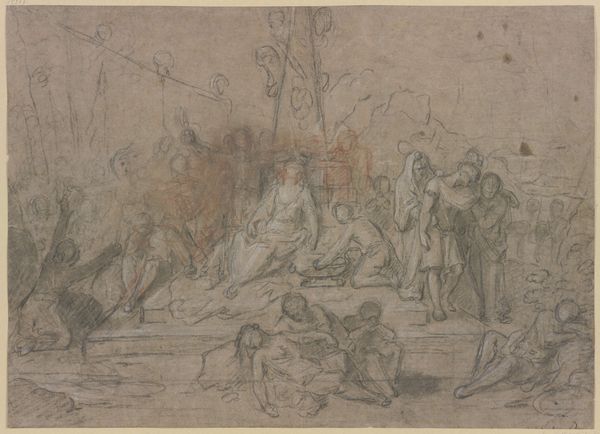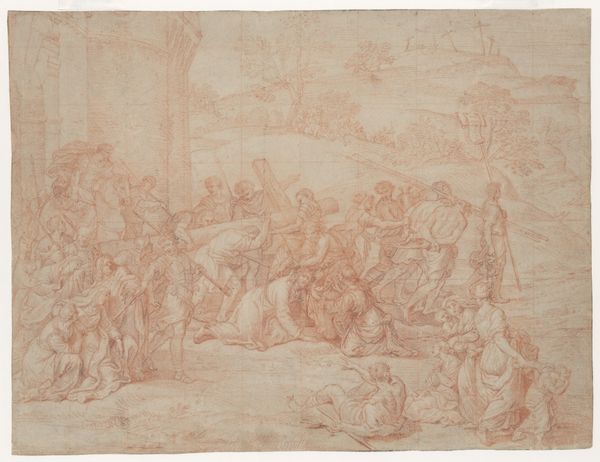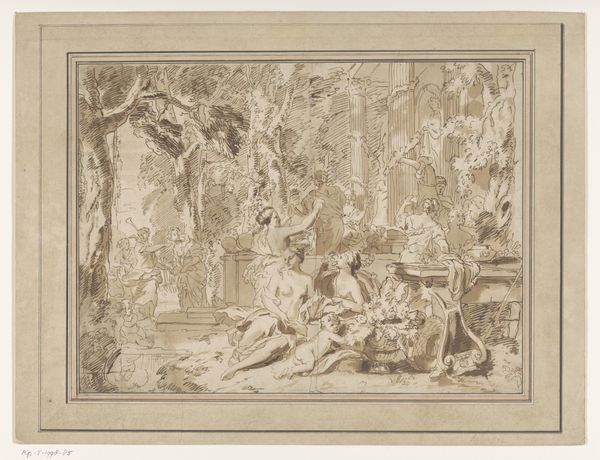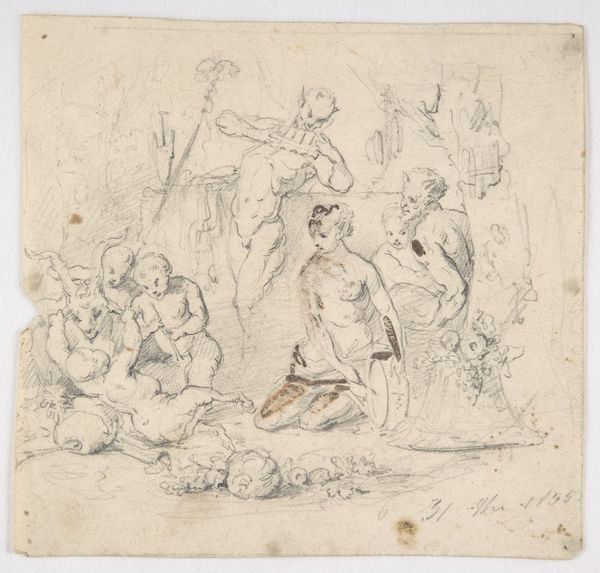
drawing, print, ink, pen, pastel
#
drawing
#
baroque
# print
#
ink
#
coloured pencil
#
pen
#
pastel
Dimensions: 6 1/4 x 8 1/2 in. (15.8 x 21.6 cm)
Copyright: Public Domain
Curator: Well, what a spirited drawing. It immediately gives the impression of bacchanalian revelry. Editor: That’s interesting. I’m immediately drawn to the textures and what seems to be a mixed media approach here. This is Claude Gillot's, "Satyrs Preparing for a Festival," dating from around 1685 to 1722, presently housed here at the Met. It combines pen, ink, and what might be pastel or coloured pencil on paper. Look closely. Curator: Yes, the dynamism created with that combination is what makes it. Given the date and subject matter, it likely served as a preparatory sketch for a larger, perhaps more polished piece, meant for display. Satyrs, symbols of unbridled freedom, and festivals—it speaks of challenging social norms, at least in imagery. Editor: Absolutely. I am struck by the economy of means. Notice how the use of pen and ink delineates the forms of the satyrs and figures. It emphasizes their physicality, especially compared to the softer texture of the coloured pencils used for the background elements, blurring lines and hierarchies between representation. There's also that unfinished section on the upper-right. Curator: That’s really interesting in the way that it offers us an insight into Gillot’s process. Considering this might have been made for print production, perhaps this method also served to make it easier to be copied by printmakers working with engraving or etching. Did the method allow more workshops to participate? Editor: Possibly. What I find interesting is thinking about the paper itself. Its texture, its origin... Where was it made? How did its quality impact the final piece? Were these materials widely available, or was their consumption and the resulting works linked to power? Curator: All relevant questions when considering art's production. What truly captivates me is the theme: the tension between societal constraints and the release found in festivals. I imagine viewers from that period felt that tension acutely, looking at something like this that represents the idealized escape from everyday life. Editor: And the labor needed to create that image of escape… Was the process repetitive? Were certain tasks allocated to different artisans based on their experience and skills? Considering these questions connects this work to broader socio-economic and production-based history. Curator: Precisely. This playful drawing becomes a layered artifact of not only artistic but also socio-political consideration. Editor: A tangible representation of Gillot’s artistry, of course, but equally a fragment of its era, captured via its raw materials and creation process.
Comments
No comments
Be the first to comment and join the conversation on the ultimate creative platform.

